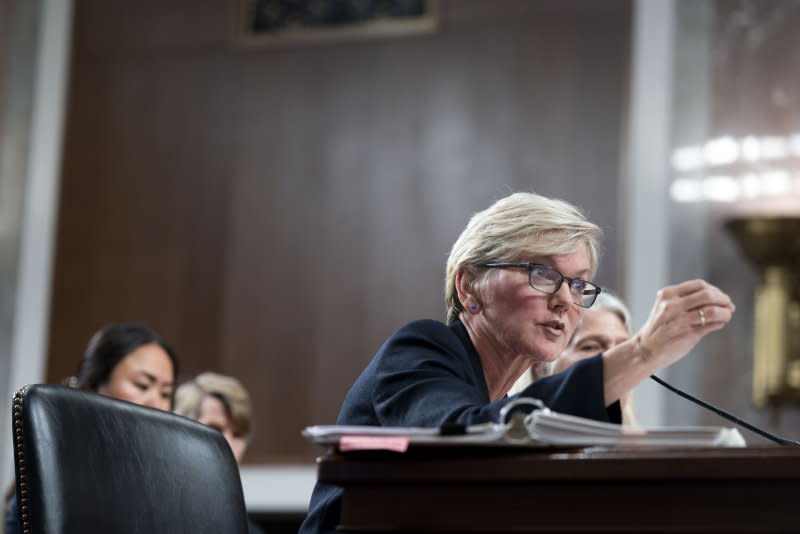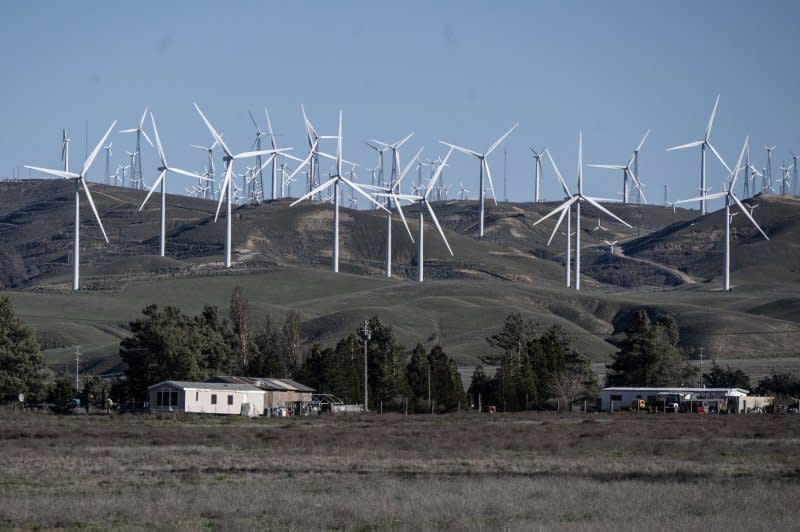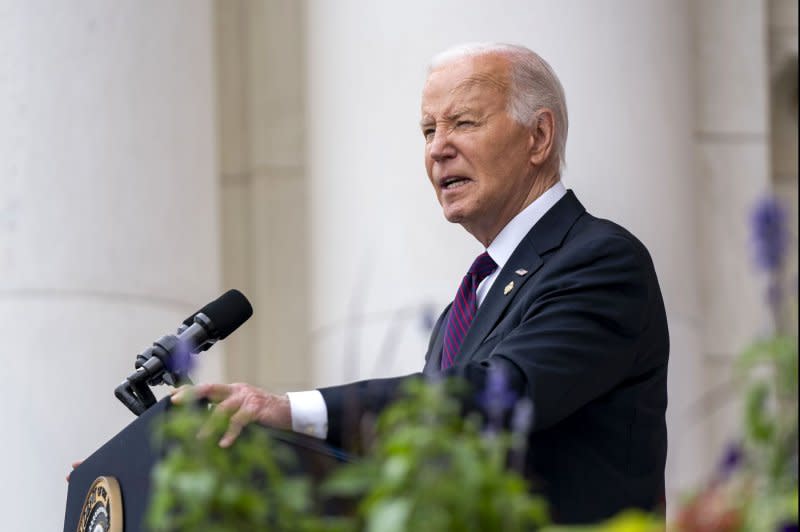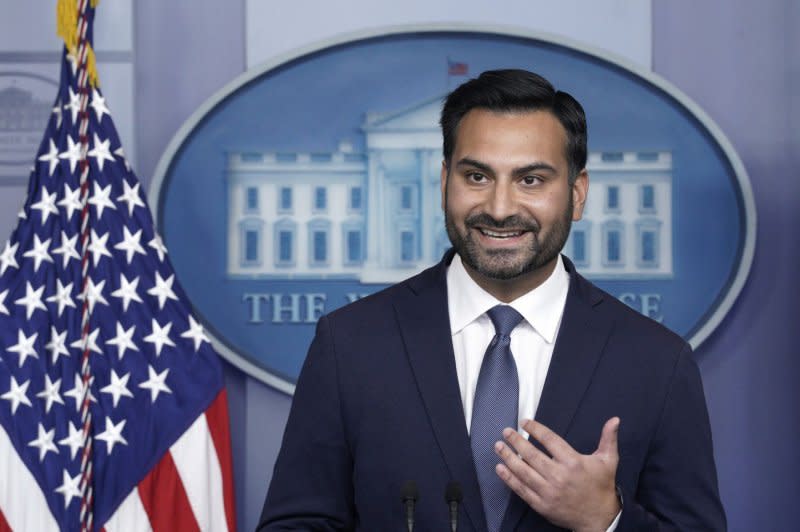White House unveils 'unprecedented' 21-state initiative to modernize U.S. power grid

- Oops!Something went wrong.Please try again later.
May 28 (UPI) -- The Biden administration on Tuesday at a White House summit unveiled a 21 state initiative to help direct America's transition to clean energy sources while modernizing the dated U.S. power grid's infrastructure.
When it comes to energy transmission, Energy Secretary Jennifer Granholm said, "We do have to walk and chew gum at the same time, meaning we've got to build new and we've got to upgrade the existing" power transmission infrastructure "quickly." It's a necessity, she said, "so the lights stay on across the country."
The "Federal-State Modern Grid Deployment Initiative" comprises 21 states, all notably with Democrat governors: Arizona, California, Colorado, Connecticut, Delaware, Hawaii, Illinois, Kentucky, Maine, Maryland, Massachusetts, Michigan, New Jersey, New Mexico, New York, North Carolina, Oregon, Pennsylvania, Rhode Island, Washington and Wisconsin.
Granholm, a former Michigan governor, noted how Energy Department is aware "we cannot do this alone" and called the power grid the "largest machine in the world."
The initiative aims to cut back on power outages and improve the capacity of electrical transmission. It came as 800,000 have been left without power in Texas amid severe weather over the Memorial Day holiday weekend and into this week throughout the South and Midwest, where many Texans could be without power for several days.

The White House Climate Policy Office and Department of Energy made the announcement Tuesday at a summit with governors, regulators, utilities, labor unions and industry leaders "to explore innovative policy solutions to unlock the deployment of modern grid technologies and share best practices," according to a news release.
Thirteen projects have been funded so far through Grid Deployment Office and the Energy Department is "excited" to utilize funding and resources given under Biden's bipartisan Infrastructure Law, Granholm remarked at Tuesday afternoon's meeting.

"Grid enhancing technologies can do the lion's share of that increased demand," she said. "This is the moment to really be talking about this"
Earlier Tuesday, President Joe Biden's climate adviser, Ali Zaidi, called the initiative "unprecedented," saying it will "drive grid adaptation quickly and cost-effectively."

Zaidi told CNN the United States is "investing tens of billions" of dollars, "the most significant public investment in a generation," he said, "to strengthen our grid to prevent power outages in the face of extreme weather, bolster U.S. energy security, and drive innovation."
At the White House before Granholm spoke, Zaidi said, "We are at a remarkable, remarkable moment in the power sector decarbonization journey."
"This year we will add more electric generation capacity to the grid than we have in two decades," he said as he pointed out 96% of that will be clean. "That's a dramatic moment to find ourselves in."
The Biden administration has a 2035 goal to have a carbon-neutral power grid. They have taken "critical steps," they said earlier, to keep improving the country's power grid in lieu of congressional inaction before this year's presidential election, and point to ongoing upgrades of 100,000 miles of existing power lines.
"A galvanizing and hopefully an achievable target we can get under," Zaidi said of the goals. "We've got the technology, we've got the workers," he said.
But they noted how, historically, expanding the U.S. power grid capacity "has typically relied on building new transmission lines with technologies that have not changed since the mid-twentieth century," in a process taking up to 10 years to finish.
An International Brotherhood of Electrical Workers union official said Tuesday IBEW was committed and "prepared to shape the future of the electrical grid" during the White House summit.
Deploying new tools and technology means that renewable and other clean power sources "can be integrated sooner and more cost-effectively than waiting for new transmission construction, which will address load growth challenges more rapidly, create good-paying jobs and lower Americans' utility bills," according to the White House.
As advancements in technology and infrastructure continue to evolve, "so does our approach to training members," said Danielle Eckert, IBEW's director of government affair. She called the union's training programs "meticulously designed to equip our members with the skills and knowledge necessary" to "seamless transition from the classroom to the job site" as the power grid "continues to innovate and evolve."
The new initiative also came the same day new federal guidelines were put in place for corporations seeking to purchase carbon credits in an effort to offset their emissions.
"The next great crisis in this country, there's going to be a shortage of electricity," Texas A&M University Chancellor John Sharp said recently about the plan for the state system's 11 universities to get in the energy business as the border state with Mexico still sees energy demand increasing amid rising temperatures.
The United States' integration of renewable energy -- which include the use of wind, solar, hydropower, biomass and geothermal -- for the first time in 2022 surpassed coal-fired generation of the U.S. electric power sector.
According to the White House, the country is on track to build more new electric generation capacity in 2024 than it has in 20 years, 96% of which will be clean energy, intended to accelerate improvements to the electric transmission and distribution network, "which are critical to meeting the country's objectives for affordable, clean, reliable, and resilient power."
Zaidi called for a "multi-time scale set of solutions" Tuesday afternoon.
Yet despite the decline in coal power generation, coal still holds "a significant share of the U.S. electricity mix, more than any renewable energy source," according to news site Oil Price.

